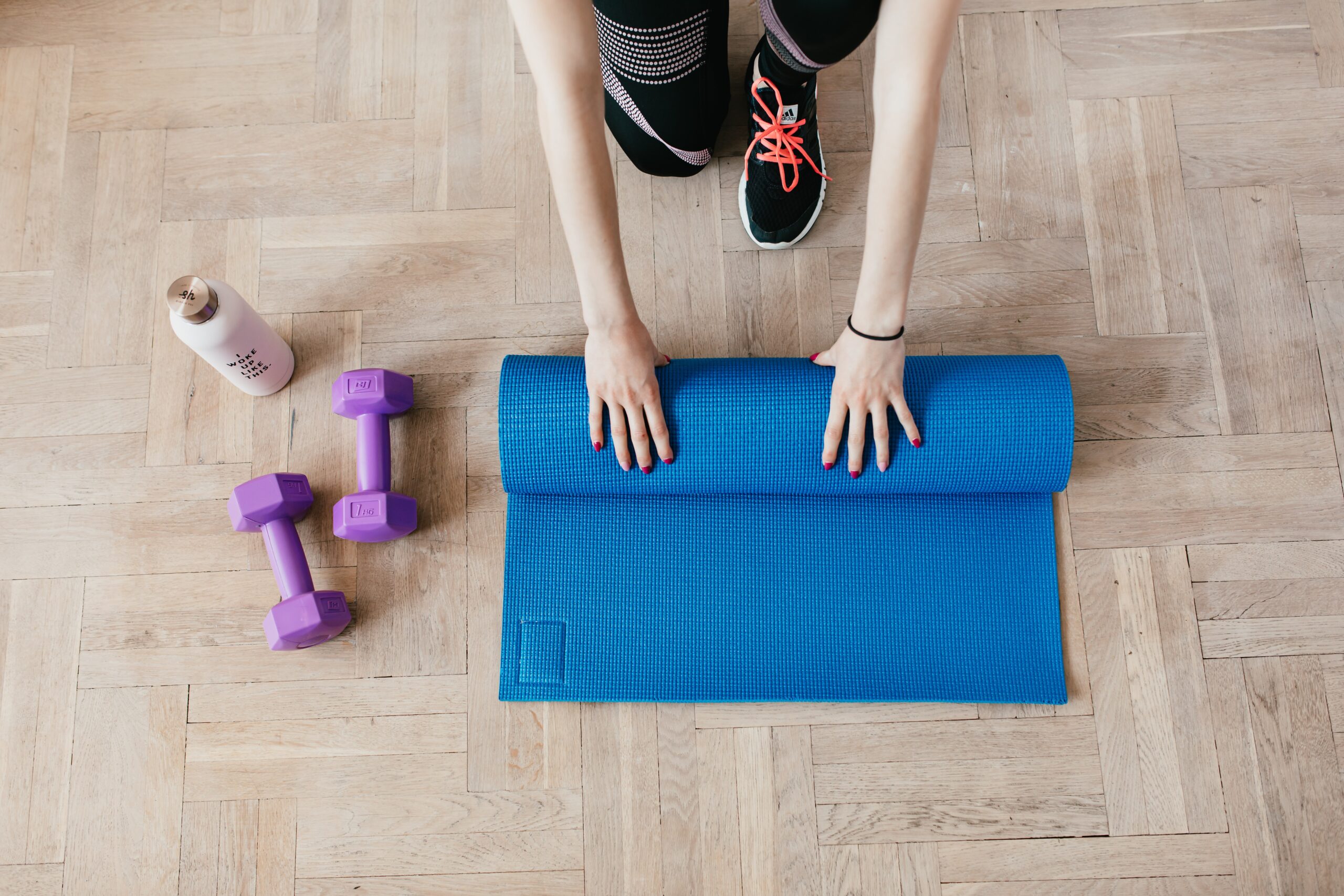Home workouts have become increasingly popular in recent years, as more and more people are looking for convenient and cost-effective ways to stay fit and healthy. With the right equipment and a little bit of motivation, it’s possible to achieve a great workout from the comfort of your own home. In this article, we’ll explore some tips and ideas for creating an effective home workout routine.
Here are 8 tips to follow
1. Set up a dedicated workout space
One of the first steps in creating a successful home workout routine is to set up a dedicated workout space. This could be a spare room, a corner of your living room, or even your garage. Make sure the space is clean, well-lit, and free of clutter. Having a dedicated workout space will help you stay focused and motivated during your workouts.
When setting up your workout space, consider the type of workouts you’ll be doing and the equipment you’ll need. For example, if you’ll be doing yoga or Pilates, you’ll want to make sure you have enough room to lay out a yoga mat. If you’ll be doing strength training with weights, make sure you have enough space to move around safely.
It’s also a good idea to decorate your workout space in a way that inspires and motivates you. This could mean hanging up motivational posters or quotes, setting up a vision board, or displaying photos of your fitness goals. By creating an inviting and inspiring workout space, you’ll be more likely to stick with your home workout routine.
2. Invest in some basic equipment
While it’s possible to get a great workout using just your body weight, investing in some basic equipment can help you take your workouts to the next level. Some good options include resistance bands, dumbbells, kettlebells, and a yoga mat. These items are relatively inexpensive and can be used for a wide variety of exercises.
When choosing equipment for your home workouts, consider your fitness goals and the types of exercises you’ll be doing. For example, if you want to build strength and muscle mass, dumbbells or kettlebells are a good choice. If you want to improve your flexibility and balance, a yoga mat and some resistance bands would be useful.
It’s also important to choose equipment that is appropriate for your fitness level and experience. If you’re new to working out or have any injuries or health conditions, make sure to consult with a doctor or fitness professional before starting any new exercise program.
3. Create a workout plan
Once you have your workout space set up and your equipment ready to go, it’s time to create a workout plan. This could be as simple as writing down a list of exercises to do each day or as complex as creating a detailed training program with specific goals and milestones. Whatever approach you choose, make sure your plan is realistic and achievable.
When creating your workout plan, consider your fitness goals and the types of exercises that will help you achieve them. For example, if you want to lose weight and improve your cardiovascular health, your plan might include a mix of cardio exercises like jumping jacks or burpees along with strength training exercises like squats or lunges.
It’s also important to include rest days in your workout plan to allow your body time to recover between workouts. Overtraining can lead to fatigue, injury, and burnout – so make sure to listen to your body and give yourself enough time to rest and recover.
4. Incorporate strength training
Strength training is an important part of any fitness routine, and it’s especially important for home workouts. By incorporating exercises that target all the major muscle groups, you can build strength, improve your posture, and reduce your risk of injury.
Some good strength training exercises to include in your home workouts include squats, lunges, push-ups, rows, planks, and bridges. These exercises can be done using just your body weight or with added resistance from weights or resistance bands.
When incorporating strength training into your home workouts, make sure to use proper form and technique to avoid injury. If you’re new to strength training or unsure how to perform an exercise correctly, consult with a fitness professional or do some research online to learn the proper form.
5. Don’t forget about cardio
Cardiovascular exercise is also an important part of any fitness routine. While it can be challenging to get a good cardio workout at home without access to machines like treadmills or stationary bikes, there are still plenty of options available.
Some good cardio exercises to include in your home workouts include jumping jacks, burpees, mountain climbers, high knees, butt kicks, and skater hops. These exercises can be done using just your body weight and require no special equipment.
When incorporating cardio into your home workouts, make sure to choose exercises that are appropriate for your fitness level and experience. Start slowly and gradually increase the intensity over time as you build endurance.
6. Mix it up
One of the keys to staying motivated and avoiding boredom with your home workouts is to mix things up regularly. This could mean trying new exercises, changing the order of your routine, or incorporating new equipment or challenges.
For example, you could try a new workout video or app, join an online fitness challenge, or try a new type of exercise like Pilates or kickboxing. By keeping things fresh and interesting, you’ll be more likely to stick with your home workout routine over the long term.
7. Stay consistent
Consistency is key when it comes to achieving results with any fitness routine, including home workouts. Make sure to schedule regular workout sessions into your calendar and stick to them as best you can.
Even if you can’t do a full workout every day, try to do something active – even if it’s just a quick walk or some stretching – to keep yourself on track. By staying consistent with your home workouts, you’ll be more likely to see progress and achieve your fitness goals.
8. Track your progress
Finally, it’s important to track your progress as you work towards your fitness goals with your home workouts. This could mean keeping a workout journal, taking progress photos, or using a fitness tracker or app to monitor your activity levels.
By tracking your progress regularly, you’ll be able to see how far you’ve come and stay motivated to keep going. You’ll also be able to identify areas where you need to improve and make adjustments to your workout plan as needed.
Conclusion
In conclusion, home workouts can be an effective and convenient way to stay fit and healthy. By setting up a dedicated workout space, investing in some basic equipment, creating a realistic workout plan, incorporating strength training and cardio exercises, mixing things up regularly, staying consistent, and tracking your progress, you can achieve great results from the comfort of your own home.



